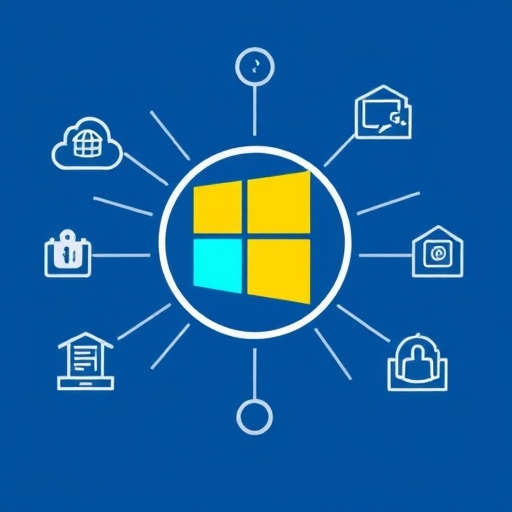Cloud identity accounts in Microsoft Entra ID (formerly Azure Active Directory or Azure AD) represent identities that exist primarily in the cloud and are used to authenticate and authorize access to resources hosted in cloud environments, such as Microsoft 365, Azure services, and third-party cloud applications.
These identities are crucial for managing access to cloud resources in a modern, hybrid IT environment.
Here's what you need to know about cloud identity accounts in Entra ID.
1. What are Cloud Identity Accounts?
Cloud identity accounts in Entra ID refer to accounts that are entirely managed within Azure Active Directory.
They do not rely on an on-premises Active Directory (AD) for authentication or directory services.
Cloud-only accounts are typically created directly within Azure AD and have no dependency on on-premises AD servers.
These accounts are commonly used for users who primarily interact with cloud-based resources, such as Microsoft 365 applications, Azure resources, and other cloud-based services.
Key Characteristics of Cloud Identity Accounts
1.1. No On-premises Dependency
Cloud identities exist entirely within Azure AD and do not rely on an on-premises AD infrastructure.
1.2. Azure AD Authentication
They use Azure AD for authentication, which can be configured with multi-factor authentication (MFA), conditional access, and other security policies.
1.3. Single Sign-On (SSO)
Cloud identity accounts can be used for Single Sign-On (SSO) to various cloud applications, eliminating the need for multiple logins.
1.4. Scalability
Cloud identities can scale easily, especially in environments where most resources are in the cloud.
2. Types of Cloud Identity Accounts
There are several types of identity accounts that fall under Entra ID (Azure AD).
They define the way users are managed, and their integration with cloud and hybrid environments.
2.1. Cloud-Only Accounts
These are purely created and managed within Azure AD.
All authentication and authorization activities occur within Azure AD, and these accounts are ideal for cloud-first organizations.
Example use case
A company that only uses cloud applications like Microsoft 365 and does not have any on-premises infrastructure.
Benefits
Easy management, no dependency on on-premises AD, ideal for remote or cloud-only workforces.
2.2. Hybrid Accounts (Azure AD Join with On-Premises AD Sync)
Hybrid accounts are user accounts that are synchronized from on-premises Active Directory to Azure AD using tools like Azure AD Connect.
These accounts can authenticate both on-premises and in the cloud.
Example use case
A company with both on-premises resources (e.g., file servers, legacy applications) and cloud resources (e.g., Microsoft 365, Azure apps).
Benefits
Seamless access across on-premises and cloud resources using the same credentials (single identity), and central management of users.
2.3. Guest Accounts
These are accounts for external users (guests) who need access to an organization’s resources, typically for collaboration or short-term access.
Example use case
A contractor or business partner requiring access to a company’s SharePoint site, Microsoft Teams channel, or application.
Benefits
Guest access is secure, and organizations can manage permissions for these users without the need for full user account provisioning.
3. Benefits of Cloud Identity Accounts
Cloud identity accounts offer several advantages, particularly for organizations that operate primarily in the cloud or have hybrid IT environments.
3.1. Simplified Identity Management
Cloud identity accounts can be managed entirely within Azure AD, enabling centralized identity and access management.
No need for complex setups or maintaining on-premises AD servers for cloud-only resources.
3.2. Seamless Access to Cloud Resources
Cloud identity accounts are used for accessing Microsoft 365 apps (e.g., Word, Excel, Teams), Azure resources, third-party SaaS applications, and more.
Single Sign-On (SSO) enables users to access multiple applications with one set of credentials.
3.3. Scalability
Cloud identities are easily scalable, which is particularly beneficial for businesses with growing numbers of remote or geographically distributed employees.
3.4. Enhanced Security
Azure AD provides modern authentication protocols (e.g., OAuth, OpenID Connect) and supports advanced security features such as Multi-Factor Authentication (MFA), Conditional Access, and Identity Protection.
These security features can be enforced on cloud identity accounts to mitigate security risks.
3.5. Reduced Administrative Overhead
With Azure AD, cloud identity accounts can be easily created, managed, and removed through the Azure portal or via automated scripting tools like PowerShell or the Graph API.
Automatic syncing and provisioning through services like Azure AD Connect help reduce manual administration.
4. Authentication and Security for Cloud Identity Accounts
Cloud identity accounts in Microsoft Entra ID (Azure AD) leverage a robust security model that includes several advanced features for secure authentication and access management.
4.1. Authentication Methods
Password-based authentication
It's the traditional username/password.
Multi-Factor Authentication (MFA)
A second layer of security that requires a second factor (such as a phone, biometrics, or a hardware token) in addition to the password.
Passwordless authentication
Users can authenticate using methods such as Windows Hello, Microsoft Authenticator app, or FIDO2 security keys.
Conditional Access Policies
Conditional access policies allow administrators to enforce rules based on user context, such as location, device health, and application being accessed.
This adds an additional layer of security to cloud identities.
4.2. Self-Service Options
Self-Service Password Reset (SSPR)
Users with cloud identities can reset their passwords using a self-service portal, reducing the burden on helpdesk teams.
Self-Service Group Management
Cloud identity accounts can be delegated permission to manage their own group memberships or roles in the directory.
5. Managing Cloud Identity Accounts
Managing cloud identity accounts involves creating, updating, and deactivating accounts, assigning roles, and applying policies.
Here's how you can do it.
5.1. Creating Cloud Identity Accounts
Via Azure Portal:
Navigate to Azure AD > Users > + New user.
Choose Create user for a new cloud identity or Invite user for an external guest.
Via PowerShell:
You can use PowerShell to create users via the New-AzureADUser cmdlet or New-MsolUser for older commands.
5.2. Assigning Roles and Group Memberships
Cloud identity accounts can be assigned to roles such as Global Administrator, User Administrator, Security Reader, and more.
Groups can be assigned to cloud identities to simplify management of permissions, licenses, and application access.
5.3. Licensing
Cloud identity accounts can be assigned licenses for various Microsoft 365 services, like Exchange Online, SharePoint, and Teams.
5.4. Managing Access to Applications
Cloud identity accounts can be assigned to cloud applications (e.g., Microsoft 365 apps, SaaS applications) through Enterprise Applications in Azure AD.
6. Guest Access for External Users
One of the significant features of cloud identities is the ability to invite external users (guests) to access resources in your organization without creating full accounts.
6.1. How it works
You can invite users from other organizations to collaborate on specific resources like Microsoft Teams, SharePoint, or custom applications.
Guest users sign in using their own corporate credentials (federated identity) or personal Microsoft accounts.
You can assign guest users to specific groups, applications, or resources, controlling their access rights.
6.2. Managing Guest Accounts
Inviting External Users
In Azure AD, go to Users > + New guest user, then enter the guest's email address to send an invitation.
Access Control
Once a guest accepts the invitation, you can assign them roles, licenses, or add them to specific groups for resource access.
7. Lifecycle Management for Cloud Identity Accounts
Managing the lifecycle of cloud identity accounts includes creation, modification, and deletion of accounts.
Entra ID allows for automated processes to manage users' lifecycle events.
Automated User Provisioning
You can set up automated provisioning from third-party SaaS apps to Azure AD or vice versa.
Deactivation and Deletion
Cloud identity accounts can be disabled or deleted using the Azure portal, PowerShell, or via automation tools.
Conclusion
Cloud identity accounts in Microsoft Entra ID (Azure AD) play a crucial role in modern identity and access management.
They provide the foundation for secure, scalable, and efficient access to cloud resources, ensuring that users can authenticate across services while benefiting from advanced security features like Multi-Factor Authentication (MFA), Conditional Access, and Passwordless Authentication.
Whether your organization is cloud-only or hybrid, understanding how cloud identity accounts work is critical for managing access and maintaining security across your cloud and hybrid environments.

























Leave a Reply